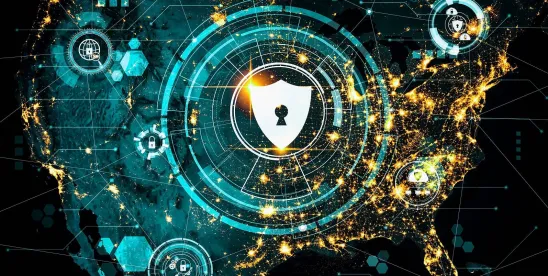The Intelligence Authorization Act for Fiscal Year 2025 (S.4443) is a bold legislative step in addressing ransomware as a critical threat. The act’s provisions, from elevating ransomware to a national intelligence priority to establishing an AI Security Center, illustrate the U.S.’s comprehensive approach to tackling this complex issue. The act sets the stage for a resilient defense against ransomware by fostering public-private partnerships and maintaining accountability. In this post, we explore the act’s critical cybersecurity and ransomware-related provisions and their implications for enhancing the nation’s security posture.
Deeming Ransomware Threats to Critical Infrastructure a National Intelligence Priority
The act elevates ransomware to a national intelligence priority, underscoring its grave potential to disrupt critical infrastructure and destabilize the economy. By prioritizing ransomware, the act allocates substantial intelligence resources toward understanding, mitigating, and preventing these attacks. The act empowers the director of National Intelligence to proactively identify and track the perpetrators behind these attacks and develop effective countermeasures based on the attackers’ tactics, techniques, and infrastructure.
Mandating a Report on Ransomware Threats
The act requires the director of National Intelligence to submit a comprehensive report to Congress detailing the national security implications of ransomware threats. This report equips policymakers with critical insights to develop more informed and effective legislative and policy responses. Undoubtedly, by requiring regular assessments, the act ensures that the intelligence community remains agile and adaptive in safeguarding national interests.
Establishing a Process for Designating State Sponsors of Ransomware
The act introduces a novel process for designating nations that support ransomware activities as “state sponsors of ransomware.” This provision mirrors the established framework for designating state sponsors of terrorism, enabling the application of similar diplomatic and economic pressures to countries. This designation aims to hold accountable those nations that actively support or provide safe havens for cybercriminals engaged in ransomware activities.
By labeling certain countries as state sponsors of ransomware, the U.S. acquires the authority to impose sanctions and penalties, thus creating a strong disincentive for nations to harbor or support ransomware groups.
Sense of Congress on Hostile Foreign Cyber Actors
The act further solidifies Congress’ stance against ransomware actors by expressing its view that foreign ransomware organizations and their affiliates should be considered hostile foreign cyber actors. This designation can pave the way for more aggressive legal and policy actions against these groups.
Moreover, the act takes a proactive approach by explicitly naming specific ransomware groups, such as DarkSide and Black Basta, and categorizing them as “hostile foreign cyber actors.” This label sends a clear message that their activities will not be tolerated and that the U.S. intelligence community is committed to countering their operations. However, the fluid nature of the cybercriminal underground poses a challenge. Ransomware groups often rebrand and reorganize to evade law enforcement. While naming specific groups highlights immediate threats, the legislation’s adaptability is crucial to address the ever-evolving cyber threat landscape.
Enhancing Public-Private Partnerships
The act recognizes a simple truth: We can’t fight cybercrime alone. It calls for a united front, bringing together the public and private sectors to combat the ever-evolving ransomware threat. By encouraging collaboration, the act aims to facilitate sharing critical information – threat intelligence, best practices, and technological breakthroughs. The private sector, particularly those companies operating within critical infrastructure and the cybersecurity industry, plays an indispensable role in this collective defense effort.
Establishing the Artificial Intelligence Security Center
The act acknowledges the double-edged sword of emerging technologies. While new technologies may present new vulnerabilities, they also can be powerful tools in the fight against ransomware. That’s where the new Artificial Intelligence (AI) Security Center comes in. Its mission is to strengthen our ability to detect and counteract AI-related threats, including those posed by ransomware.
The AI Security Center will focus on developing and deploying AI-powered tools to identify patterns in ransomware attacks, predict potential targets, and even automate responses. By harnessing AI’s power, the center aims to stay one step ahead of cybercriminals who are increasingly using sophisticated technology in their attacks.
Reporting and Accountability
The act strongly emphasizes transparency and accountability in the fight against ransomware. It mandates regular reporting to Congress on the progress and efficacy of measures implemented to combat this threat. These reports will offer valuable insights into the evolving ransomware landscape, the successes and challenges of current strategies, and areas requiring further attention.
Furthermore, the act mandates the prompt reporting of ransomware attacks, particularly those impacting critical infrastructure, aiming to get the intelligence community and other relevant agencies to respond swiftly and effectively.
Conclusion
The Intelligence Authorization Act for Fiscal Year 2025 marks a watershed moment in the U.S. government’s battle against ransomware. It’s not just another piece of legislation; it’s a clear statement that we’re taking this threat seriously. In essence, this act represents a bold step forward, highlighting a comprehensive and multi-faceted approach to tackling the complex ransomware issue.





 />i
/>i

